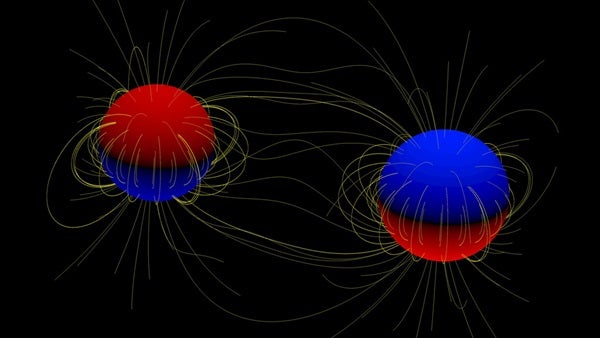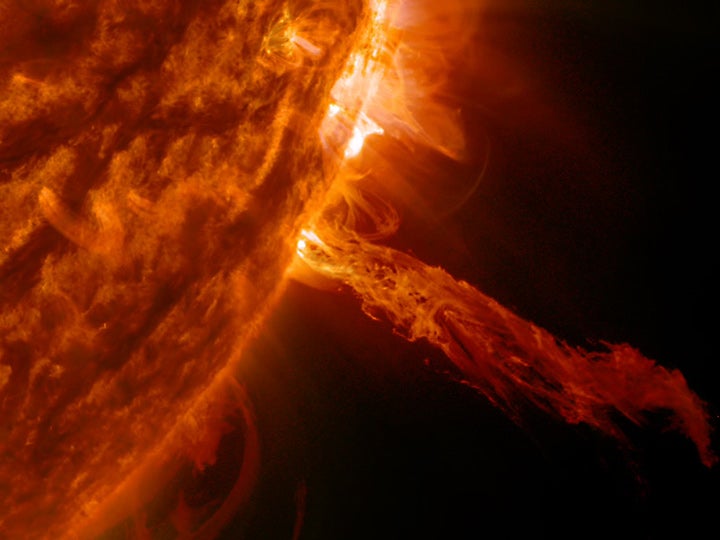Around one-third of stars in our galaxy are thought to be in binary systems, where two or more stars orbit around a common center. They are invaluable for astronomers, as watching how they behave lets astronomers measure their mass and connect this with their brightness — a key way in which we understand how stars evolve.
Shultz is a member of the Binarity and Magnetic Interactions in various classes of Stars (BinaMIcS) consortium led by Evelyne Alecian of the University of Grenoble in France. The collaboration is studying the magnetic properties of close binary stars, and Shultz made the discovery using the Canada-France-Hawaii Telescope on Mauna Kea, Hawaii.
Epsilon Lupi is the fourth-brightest star system in the southern constellation Lupus. The pair of stars is about 500 light-years away, are both blue in color, each has between seven and eight times the mass of the Sun, and combined together the pair is around 6,000 times as luminous as the Sun. Astronomers have known for many years that Epsilon Lupi is a binary system, but they had no idea that the two giant stars had magnetic fields.
“The origin of magnetism amongst massive stars is something of a mystery, and this discovery may help to shed some light on the question of why any of these stars have magnetic fields,” said Shultz.
In cool stars, such as the Sun, magnetic fields are generated by “dynamos” powered by strong convection in the outer layers of the star, where hot material rises, cools, and falls back. But there is essentially no convection in the envelopes of massive stars, so there is no support for a magnetic dynamo. Nevertheless, approximately 10 percent of massive stars have strong magnetic fields.
Two explanations have been proposed for their origin, both variants on the idea of a so-called “fossil” magnetic field, a field generated at some point in the star’s past and then locked into the star’s surface.
The first hypothesis is that the magnetic field is generated while the star is being formed; a second is that the magnetic field originates in dynamos driven by the violent mixing of material when two already-formed stars in a close binary merge.
“This discovery allows us to rule out the binary merger scenario,” said Shultz. “However, it doesn’t change the basic finding of the BinaMIcS collaboration: Fewer than 2 percent of massive stars in close binaries have magnetic fields, and we still don’t know why that is.”
The research shows the strengths of the magnetic fields are similar in the two stars; however, their magnetic axes are anti-aligned, with the south magnetic pole of one star pointing in approximately the same direction as the north pole of the other. It may even be that the two stars share a single magnetic field.
“We’re not sure why yet, but it probably points to something significant about how the stars are interacting with one another,” said Shultz.
The stars are close enough that their magnetospheres are likely to be interacting during the whole of their orbit around each other. This means that their magnetic fields may act as a giant brake, slowing down the stars. As a result, in the long term, the two stars could even be spiralling in towards each other.









![Albireo (Beta [β] Cygni) is a classic example of a double star with contrasting colors.](https://www.astronomy.com/uploads/2024/08/Albireo.jpg)
